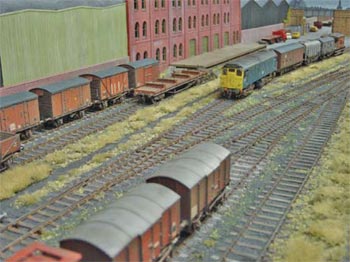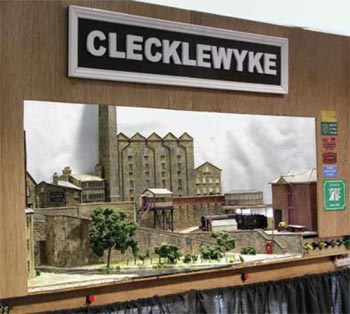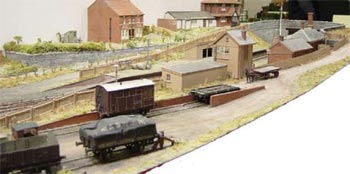Why Should I Model in P4?
 Our purpose in this guide is not to attempt to persuade
anyone to change who, for whatever reasons, is not interested in
moving to P4. Rather, our intention is to highlight the factors to
consider, should you make the move, and to suggest how best to get
started.
Our purpose in this guide is not to attempt to persuade
anyone to change who, for whatever reasons, is not interested in
moving to P4. Rather, our intention is to highlight the factors to
consider, should you make the move, and to suggest how best to get
started.
It is perhaps important to recognise that, over a modelling lifetime, we develop our techniques and become more knowledgeable about the prototype. We also become more experienced about what will work as a model.
What we know about and what we are good at will depend on what has captured our interest, on our modelling experience and on what we have been brave enough to try.
 A lot has changed over the
years, and there have been significant advances in both ready-to-run
stock and in what is available to the P4 modeller. Although there are
unlikely to be any aspects of modelling in P4 which could really cause
you problems, it will be a big step change.
A lot has changed over the
years, and there have been significant advances in both ready-to-run
stock and in what is available to the P4 modeller. Although there are
unlikely to be any aspects of modelling in P4 which could really cause
you problems, it will be a big step change.
A good starting point is to begin with a small P4 layout - if you adopt a 'keep it simple' approach, you should find it easily achievable, and, who knows, you may want to develop it further and build a larger layout to these standards.
The 18.83 Layout Challenge and the more recent Diesel and Electric Layout Challenge, organised by the Scalefour Society, showed how a variety of layouts can be modelled to P4 standards in a modest space. You may have seen some of these featured in British modelling magazines. If you decide to go down the finescale path and already do a fair amount of construction work yourself, then modelling in P4 is now no more difficult than finescale OO or EM; and converted ready-to- run rolling stock is likely to meet your requirements in a way that would have been inconceivable only a few years ago.
We hope that what follows will help give you a better understanding of what is involved in 'Moving to P4' and that, even if you do not decide to adopt P4 standards, you will find something of interest in this guide.
 Popular P4 layouts range from
the contemporary scene to steam age nostalgia. The photos show:
Popular P4 layouts range from
the contemporary scene to steam age nostalgia. The photos show:
TOP: Not exactly contemporary, for diesels have been around a long
time now. Evocative modelling of the post-steam era in central
Scotland: Longcarse West by David Furmage.
Photo: Jim Summers
CENTRE: Ian Everett's exercise in atmosphere, Clecklewyke.
Photo: Tony Wright
BOTTOM: Historical accuracy of the old M&SWJR at Chiseldon by Dave
Barrett.
Photo: Jim Summers
